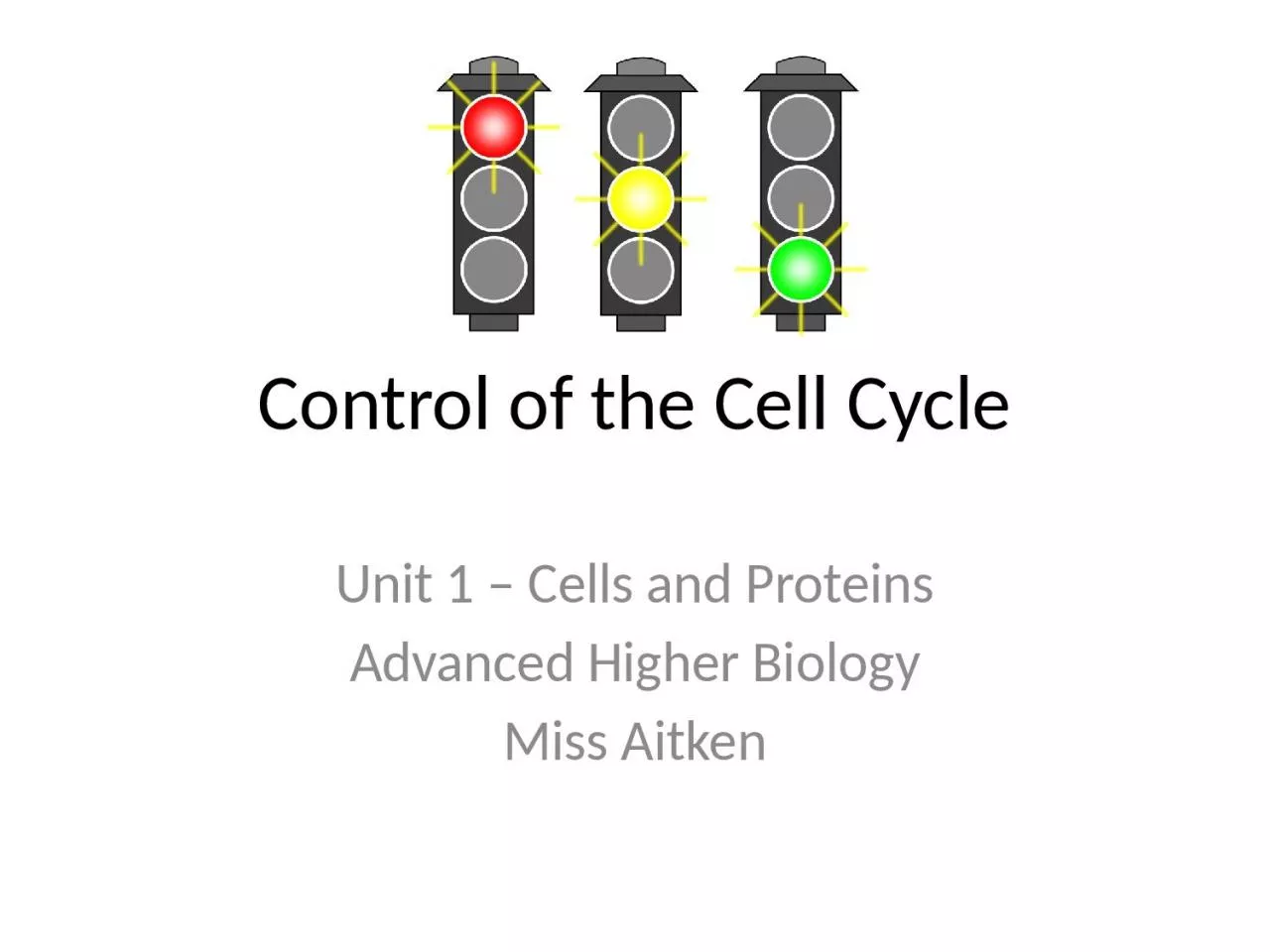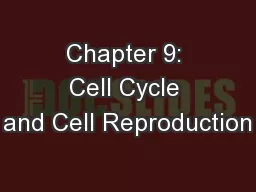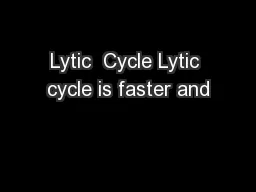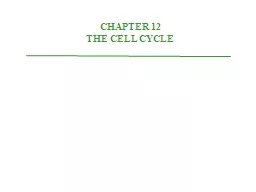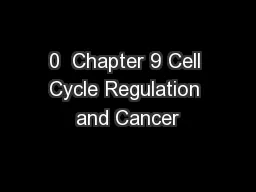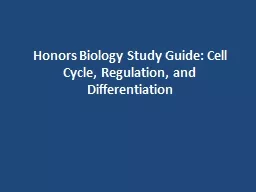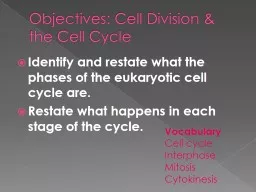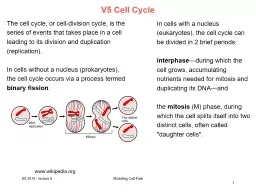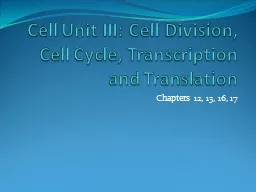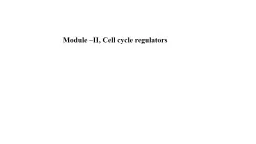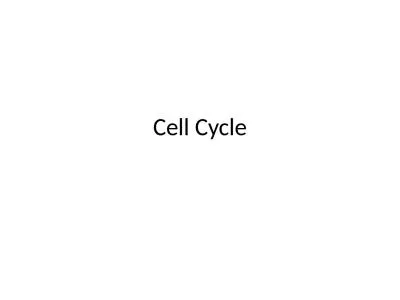PPT-Control of the Cell Cycle
Author : adia | Published Date : 2023-07-26
Unit 1 Cells and Proteins Advanced Higher Biology Miss Aitken Why is controlling the cycle important Complex events must work perfectly to produce new daughter
Presentation Embed Code
Download Presentation
Download Presentation The PPT/PDF document "Control of the Cell Cycle" is the property of its rightful owner. Permission is granted to download and print the materials on this website for personal, non-commercial use only, and to display it on your personal computer provided you do not modify the materials and that you retain all copyright notices contained in the materials. By downloading content from our website, you accept the terms of this agreement.
Control of the Cell Cycle: Transcript
Download Rules Of Document
"Control of the Cell Cycle"The content belongs to its owner. You may download and print it for personal use, without modification, and keep all copyright notices. By downloading, you agree to these terms.
Related Documents

